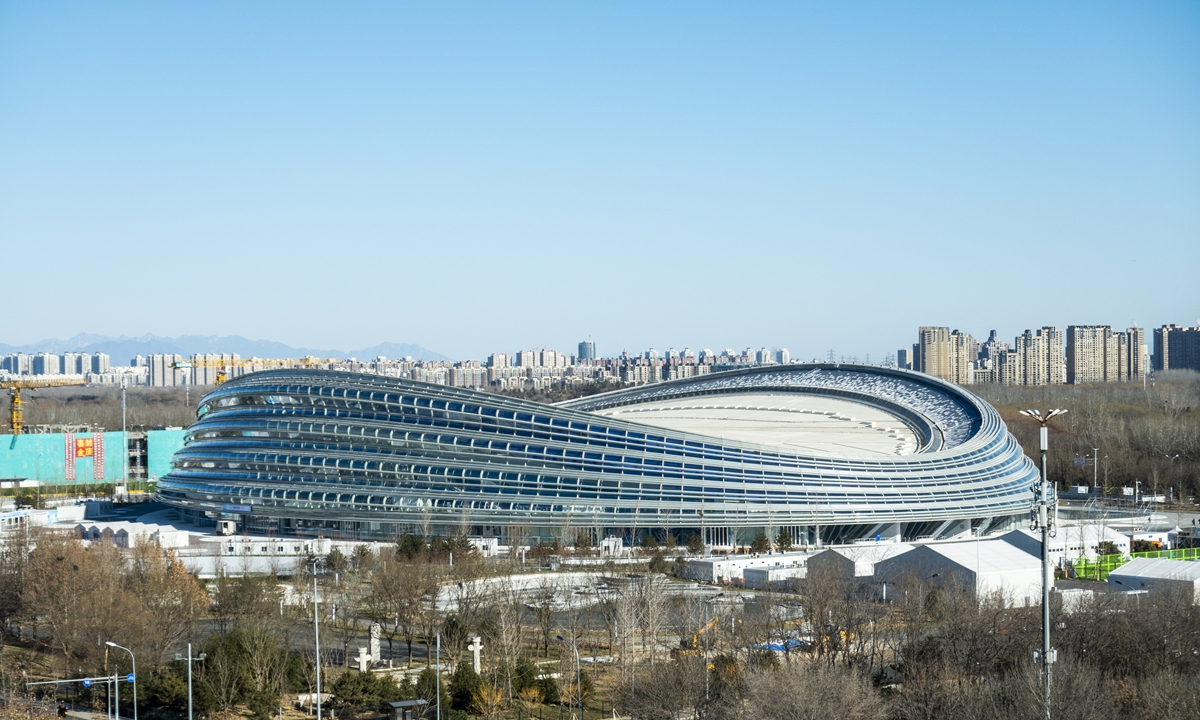
The National Speed Skating Oval, dubbed the "Ice Ribbon" Photo: VCG
The annual average concentration of PM2.5 in Beijing dropped to 33 micrograms per cubic meter in 2021, meeting the city's goal during the 14th Five-Year Plan (2021-25) ahead of schedule, which is also good news for the upcoming green Winter Olympics.
On Tuesday, the Beijing Municipal Ecology and Environment Bureau said at a press conference that the city's 2021 annual atmospheric PM2.5 concentration fell to 33 micrograms per cubic meter, reaching the second-level national standard of 35 micrograms per cubic meter. It is a further improvement from the 58 micrograms per cubic meter in 2017.
Thanks to the concerted efforts of the whole city, not only the concentration of the PM2.5 but also that of the O₃ have reached expected standards, bringing the city's air quality fully into line for the first time, which marked a breakthrough in the city's air pollution control, according to the press conference.
Netizens said this is also good news for the Beijing 2022 Winter Olympic Games and can offset concerns by some Western media over the air quality during the Games. The Games, scheduled to kick off in February, are set to make history as they will become the first ever Olympic Games fully powered by green energy.
Reuters reported on December 27 that "China is using the Winter Olympic Games to drive its efforts to improve the environment, but smog-prone capital Beijing is still preparing for the worst as the opening ceremony looms."
Beijing has greatly improved its air quality in the past years. People living in the northern part of the country likely remember the trauma of smog, an unwelcome mainstay in winter time a decade ago. After years of tackling air pollution, the Beijing-Tianjin-Hebei region and its environs saw a dramatic decrease in PM2.5 concentration.
The average concentration of PM2.5 in Beijing is expected to be about 35 micrograms per cubic meter by 2025, which means the city plans to basically eliminate heavily polluted days, municipal ecology and environment authorities said in late 2021. The capital city is expecting "Beijing Blue" to become the norm.
In 2020, the average concentration of PM2.5 in Beijing entered the level of 30-plus micrograms per cubic meter for the first time. From 2016 to 2020, the rate of decline exceeded 50 percent, Liu Xianshu, a deputy director of the Beijing Municipal Ecology and Environment Bureau, said at a press briefing on ecological and environmental protection planning during the 14th Five-Year Plan (2021-25) period.Eight districts in Beijing have met the level-II national standard for PM2.5 control, the city's surface water quality has continued to improve, and the soil is in good condition, according to Liu. The level-II national standard for PM2.5 control is 35 micrograms per cubic meter.China has made great efforts in various fields to reduce pollution and improve overall air quality, and it aims to hit peak carbon emissions before 2030 and achieve carbon neutrality before 2060.Global Times




